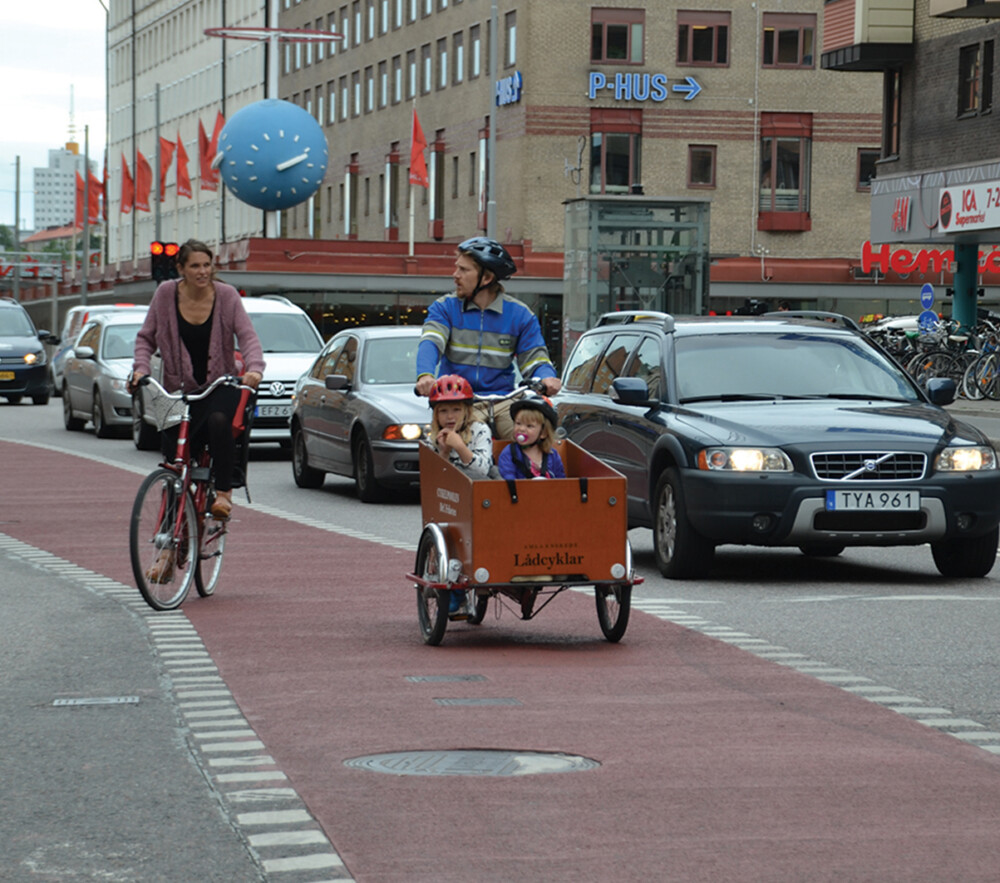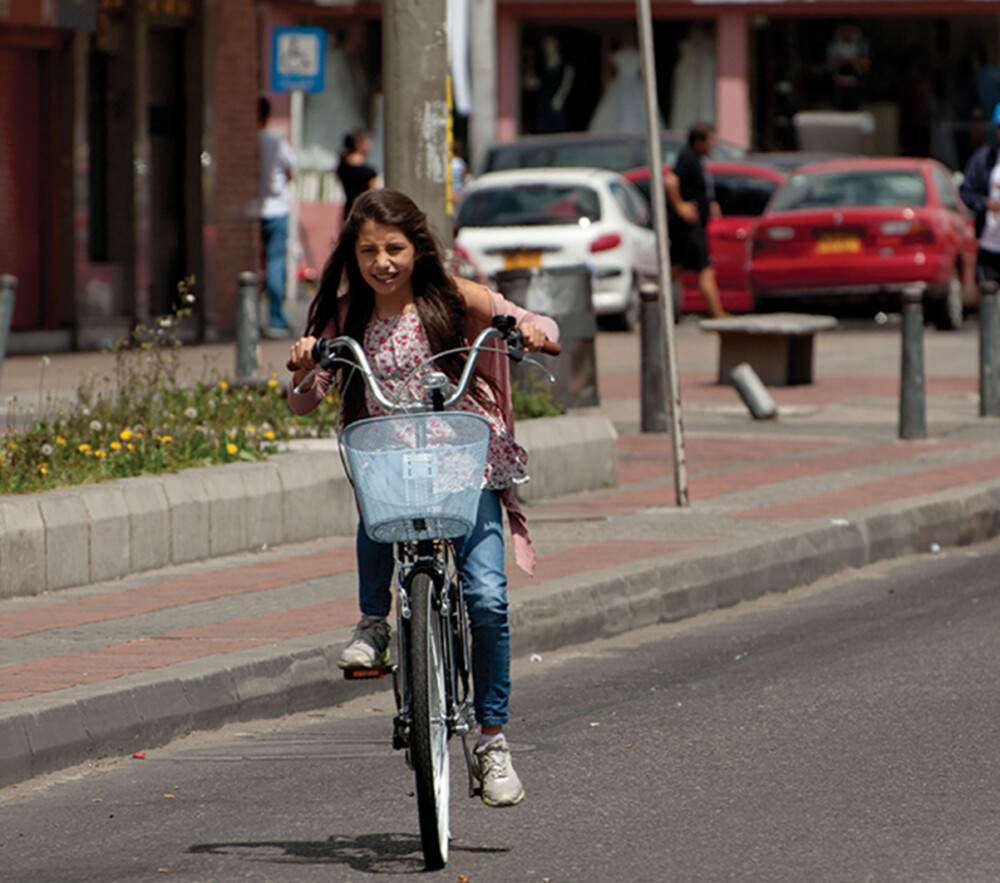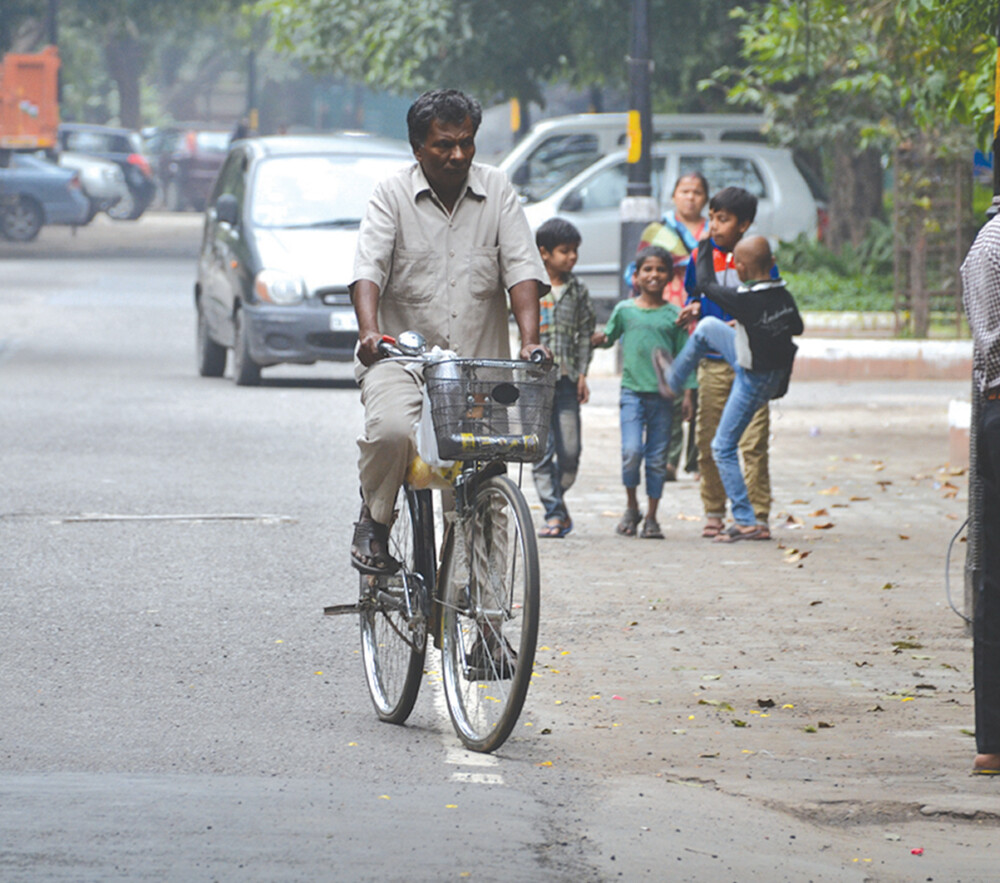-
About Streets
- Introduction
- Defining Streets
-
Shaping Streets
- The Process of Shaping Streets
- Aligning with City and Regional Agendas
- Involving the Right Stakeholders
- Setting a Project Vision
- Communication and Engagement
- Costs and Budgets
- Phasing and Interim Strategies
- Coordination and Project Management
- Implementation and Materials
- Management
- Maintenance
- Institutionalizing Change
- Measuring and Evaluating Streets
-
Street Design Guidance
- Designing Streets for Great Cities
- Designing Streets for Place
-
Designing Streets for People
- Utilities and Infrastructure
- Operational and Management Strategies
- Design Controls
-
Street Transformations
- Streets
-
Intersections
- Intersection Design Strategies
- Intersection Analysis
- Intersection Redesign
- Mini Roundabout
- Small Raised Intersection
- Neighborhood Gateway Intersection
- Intersection of Two-Way and One-Way Streets
- Major Intersection: Reclaiming the Corners
- Major Intersection: Squaring the Circle
- Major Intersection: Cycle Protection
- Complex Intersection: Adding Public Plazas
- Complex Intersection: Improving Traffic Circles
- Complex Intersection: Increasing Permeability
- Resources
Global Street Design Guide
-
About Streets
- Introduction
- Defining Streets
-
Shaping Streets
Back Shaping Streets
- The Process of Shaping Streets
- Aligning with City and Regional Agendas
- Involving the Right Stakeholders
- Setting a Project Vision
- Communication and Engagement
- Costs and Budgets
- Phasing and Interim Strategies
- Coordination and Project Management
- Implementation and Materials
- Management
- Maintenance
- Institutionalizing Change
-
Measuring and Evaluating Streets
Back Measuring and Evaluating Streets
-
Street Design Guidance
-
Designing Streets for Great Cities
Back Designing Streets for Great Cities
-
Designing Streets for Place
Back Designing Streets for Place
-
Designing Streets for People
Back Designing Streets for People
- Comparing Street Users
- A Variety of Street Users
-
Designing for Pedestrians
Back Designing for Pedestrians
- Designing for Cyclists
-
Designing for Transit Riders
Back Designing for Transit Riders
- Overview
- Transit Networks
- Transit Toolbox
-
Transit Facilities
Back Transit Facilities
-
Transit Stops
Back Transit Stops
-
Additional Guidance
Back Additional Guidance
-
Designing for Motorists
Back Designing for Motorists
-
Designing for Freight and Service Operators
Back Designing for Freight and Service Operators
-
Designing for People Doing Business
Back Designing for People Doing Business
-
Utilities and Infrastructure
Back Utilities and Infrastructure
- Utilities
-
Green Infrastructure and Stormwater Management
Back Green Infrastructure and Stormwater Management
-
Lighting and Technology
Back Lighting and Technology
-
Operational and Management Strategies
Back Operational and Management Strategies
- Design Controls
-
Street Transformations
-
Streets
Back Streets
- Street Design Strategies
- Street Typologies
-
Pedestrian-Priority Spaces
Back Pedestrian-Priority Spaces
-
Pedestrian-Only Streets
Back Pedestrian-Only Streets
-
Laneways and Alleys
Back Laneways and Alleys
- Parklets
-
Pedestrian Plazas
Back Pedestrian Plazas
-
Pedestrian-Only Streets
-
Shared Streets
Back Shared Streets
-
Commercial Shared Streets
Back Commercial Shared Streets
-
Residential Shared Streets
Back Residential Shared Streets
-
Commercial Shared Streets
-
Neighborhood Streets
Back Neighborhood Streets
-
Residential Streets
Back Residential Streets
-
Neighborhood Main Streets
Back Neighborhood Main Streets
-
Residential Streets
-
Avenues and Boulevards
Back Avenues and Boulevards
-
Central One-Way Streets
Back Central One-Way Streets
-
Central Two-Way Streets
Back Central Two-Way Streets
- Transit Streets
-
Large Streets with Transit
Back Large Streets with Transit
- Grand Streets
-
Central One-Way Streets
-
Special Conditions
Back Special Conditions
-
Elevated Structure Improvement
Back Elevated Structure Improvement
-
Elevated Structure Removal
Back Elevated Structure Removal
-
Streets to Streams
Back Streets to Streams
-
Temporary Street Closures
Back Temporary Street Closures
-
Post-Industrial Revitalization
Back Post-Industrial Revitalization
-
Waterfront and Parkside Streets
Back Waterfront and Parkside Streets
-
Historic Streets
Back Historic Streets
-
Elevated Structure Improvement
-
Streets in Informal Areas
Back Streets in Informal Areas
-
Intersections
Back Intersections
- Intersection Design Strategies
- Intersection Analysis
- Intersection Redesign
- Mini Roundabout
- Small Raised Intersection
- Neighborhood Gateway Intersection
- Intersection of Two-Way and One-Way Streets
- Major Intersection: Reclaiming the Corners
- Major Intersection: Squaring the Circle
- Major Intersection: Cycle Protection
- Complex Intersection: Adding Public Plazas
- Complex Intersection: Improving Traffic Circles
- Complex Intersection: Increasing Permeability
- Resources
- Guides & Publications
- Global Street Design Guide
- Designing Streets for People
- Designing for Cyclists
- Overview
Overview



Encouraging cycling as an efficient and attractive mode of transportation requires the provision of safe and continuous facilities. Cycling is a healthy, affordable, equitable, and sustainable mode of transportation, with positive impacts on congestion and road safety. Cities that invested in cycling have seen congestion levels decline and streets become safer for all users.1
Cycling is also good for the economy. Many recent studies demonstrate the impact of cycling on local economies. Cities that increase the cycle accessibility of their business centers attract new customers, generating more spending in local stores, and ultimately creating jobs and tax revenues. Infrastructure and design can make cycling a popular activity, appealing to a wide range of potential riders.
While cyclists can share the road with motor vehicles on quiet streets with low speeds, navigating larger streets and intersections requires dedicated facilities. Design safe and comprehensive cycle networks for cyclists of all ages and abilities. If cycling is not a safe option, potential cyclists may decide not to ride.
High-volume corridors should provide wider cycle facilities to carry larger volumes. Creating a bikeable city requires secure cycle parking spaces, easy access to transit, and a cycle share system.
Cycle lanes and tracks should allow for social and conversational riding for everyday use as well as long commutes. They should be designed for all types of riders and all levels of comfort, from the 5-year-old to the 95-year-old cyclist.
Speed
Cyclists ride at different speeds depending on their purpose, the length of their total route, their confidence level, and the facility they are using. Young children will ride at a slower speed than a cyclist making a delivery, and visitors will ride differently from locals and commuters. Design cycle facilities to accommodate riders at various speeds. Provide
sufficient protection from travel lanes, taking into account speed differentials and vehicle volume.
Electric cycles that travel up to 20 km/h often share facilities with other cycles. Design wider cycle lanes along high-volume corridors to allow fast riders to pass slower riders.

Variations
Cycle facilities should be designed for diverse vehicles and riders, for children on small tricycles, and people carrying goods in big cargo bikes, as well as cycle-rickshaws and pedicabs.
Conventional Bicycles
The most common non-motorized, single-track vehicle.

Tricycles, Cycle-Rickshaws, and Pedicabs
Tricycles such as pedicabs and cycle-rickshaws are wider, and in some cases share cycle lane facilities. They typically carry one to two passengers.

Cargo Bikes and Cycle Trucks
Cargo bikes are human-powered vehicles specifically designed for transporting loads. A cargo bike may have different forms and dimensions and can be either a bicycle or a tricycle.

Electric Cycles or E-bikes
These are cycles with electric engines.
Levels of Comfort
Many people are interested in cycling but are dissuaded by stressful interactions with motor vehicles. These potential cyclists, defined as “interested but concerned,” account for a majority of the population and vary by age and cycling ability.2 Experienced and casual cyclists are more traffic tolerant, but they account for a significantly smaller share of the population.
Cycle facilities should be designed not only for the highly capable and experienced cyclist, but also and especially for young children learning to ride, for senior riders, adults carrying children or freight, and workers commuting long distances. These riders need higher degrees of separation and protection from motor vehicle traffic.

Footnotes
1. Flusche Darren, Bicycling Means Business – The Economic Benefits of Bicycle Infrastructure. Advocacy Advance. New York City Department of Transportation. Measuring the Street: New Metrics for 21st Century Streets (New York, NY: NYC DOT, 2012).
Rachel Aldred, Benefits of Investing in Cycling (Manchester: British Cycling, 2014).
2. Geller Roger, “Four Types of Cyclists,” Portland Office of Transportation, 2015, accessed June 7, 2016, ttps://www.portlandoregon.gov/transportation/article/264746.
Adapted by Global Street Design Guide published by Island Press.
Next Section —